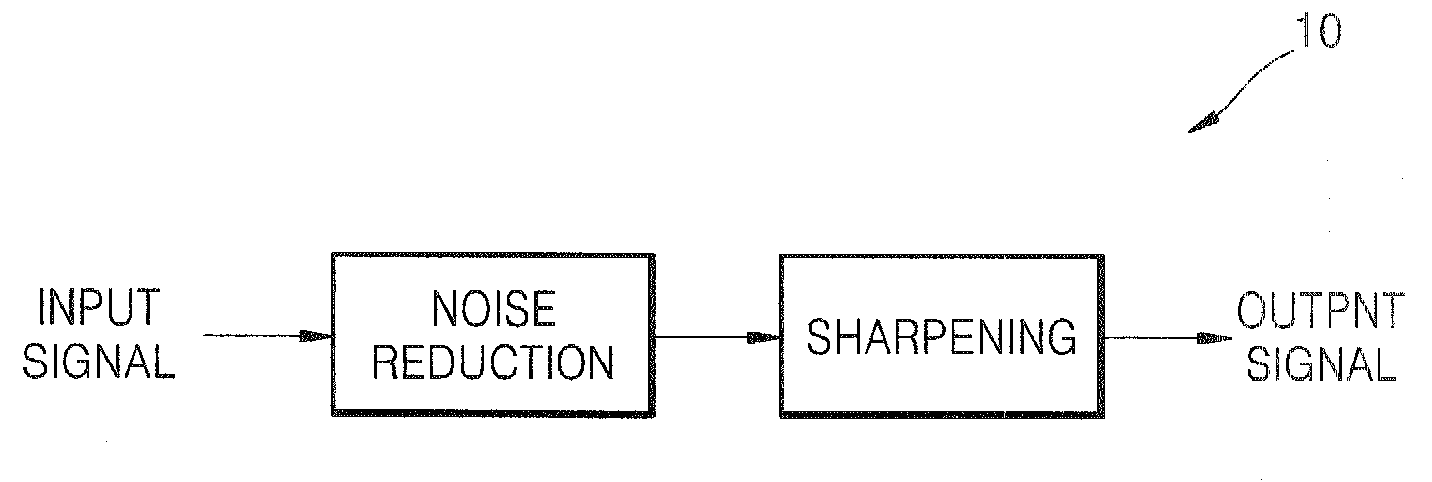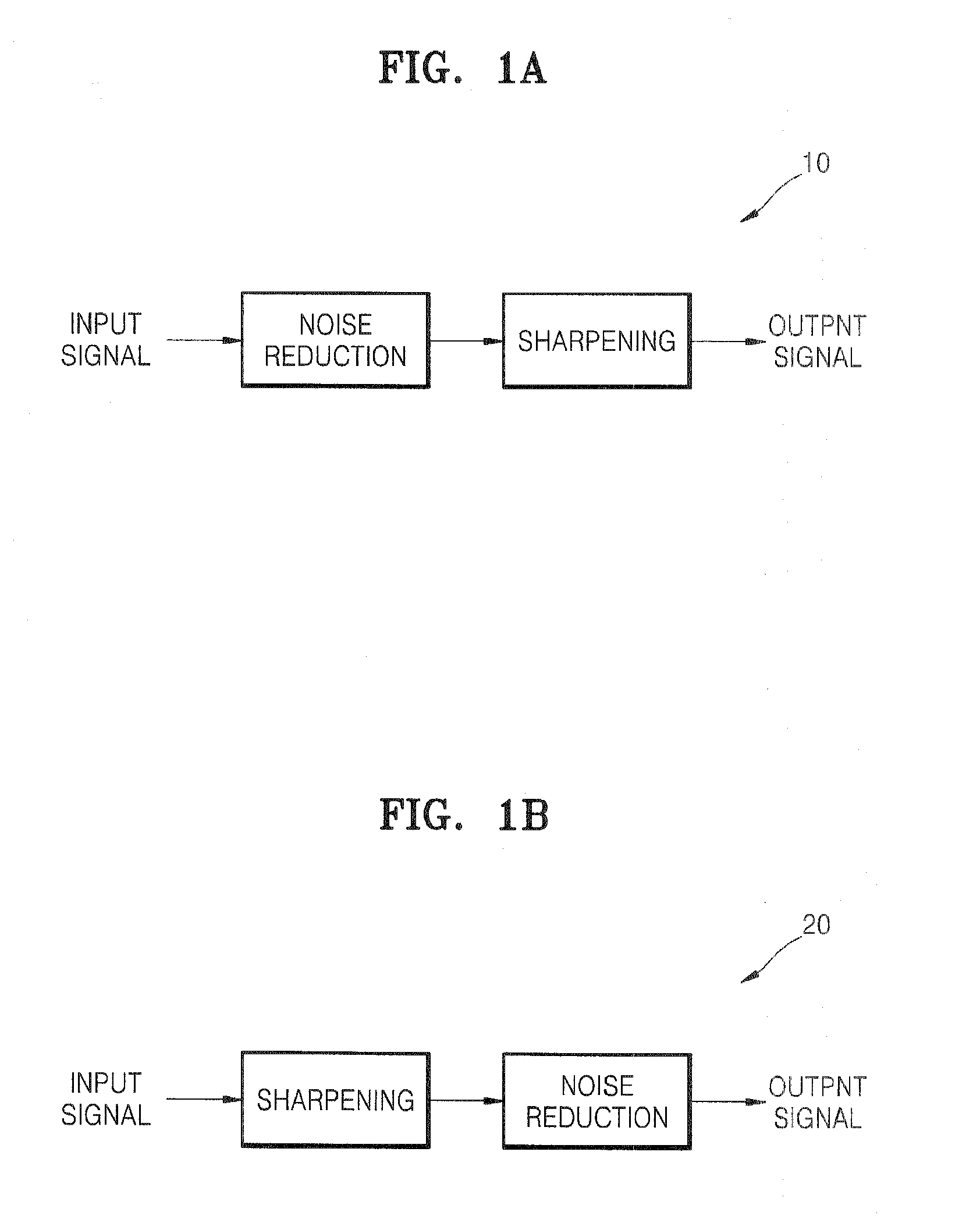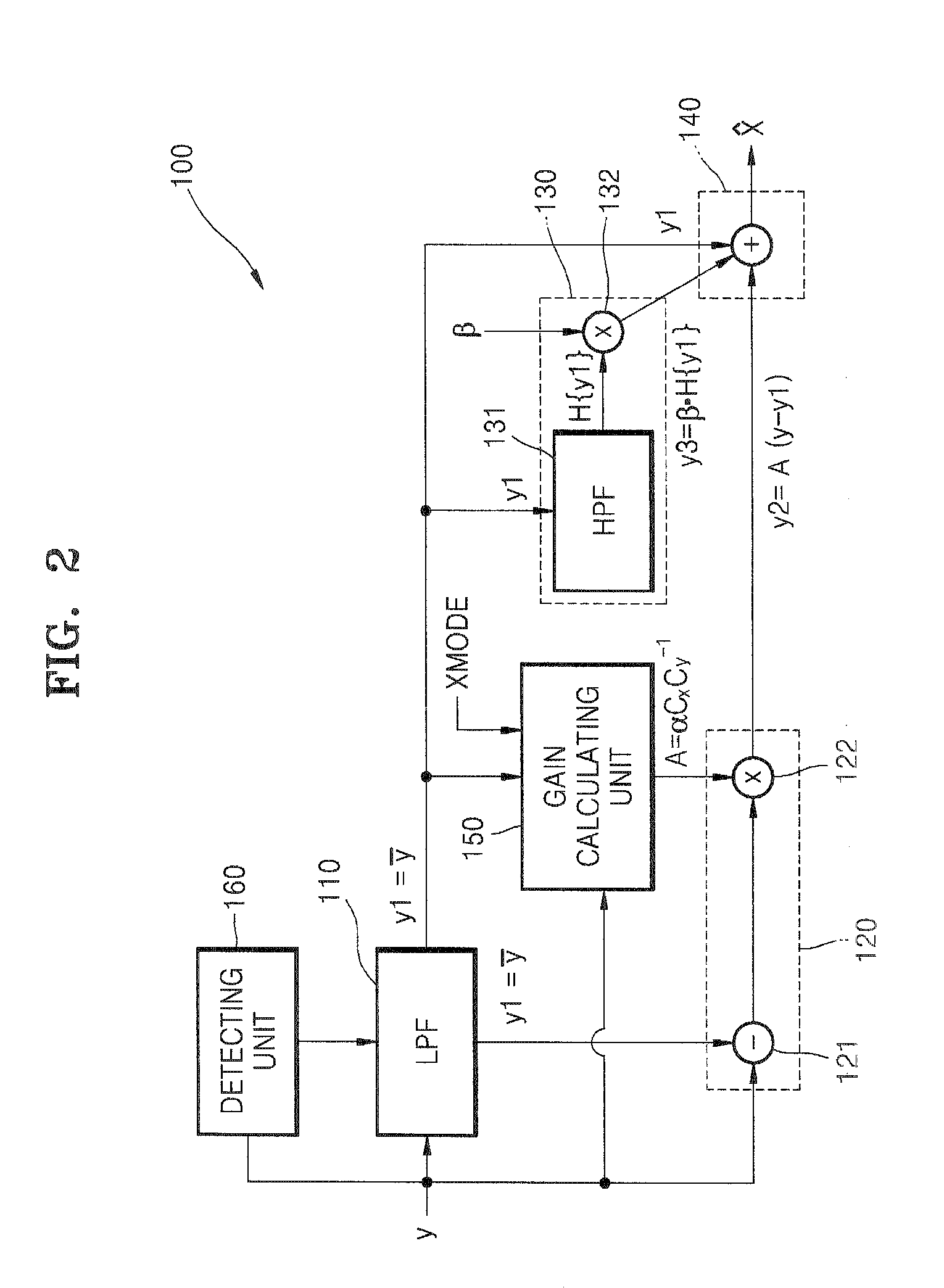Post-processing circuit for processing an image signal according to frequency components of the image signal
a post-processing circuit and image signal technology, applied in the field of post-processing circuits for processing image signals according to frequency can solve the problems of ineffective elimination of noise, inability to obtain effective post-processing, and inability to recover high-frequency components of image signals, etc., to minimize sharpening artifacts of image signals and high smooth image signals
- Summary
- Abstract
- Description
- Claims
- Application Information
AI Technical Summary
Benefits of technology
Problems solved by technology
Method used
Image
Examples
Embodiment Construction
[0040] The present invention will now be described more fully with reference to the accompanying drawings, in which exemplary embodiments of the invention are shown.
[0041]FIG. 2 illustrates a circuit diagram of a post-processing circuit 100 for appropriately processing an image signal y according to an exemplary embodiment of the present invention.
[0042]FIG. 3 illustrates frequency components of the image signal y processed by the post-processing circuit 100 of FIG. 2.
[0043] Referring to FIGS. 2 and 3, the post-processing circuit 100 includes a low-frequency extracting unit 110 in the form of a low-pass filter, a high-frequency extracting unit 120, an intermediate-frequency extracting unit 130, and an adder 140.
[0044] The post-processing circuit 100 receives the image signal y as shown at (a) in FIG. 3. The image signal y includes an original signal and noise components. The image signal y may be expressed through Equation 1.
y=y0+n Equation 1
[0045] Herein, y0 denotes the origin...
PUM
 Login to View More
Login to View More Abstract
Description
Claims
Application Information
 Login to View More
Login to View More - R&D
- Intellectual Property
- Life Sciences
- Materials
- Tech Scout
- Unparalleled Data Quality
- Higher Quality Content
- 60% Fewer Hallucinations
Browse by: Latest US Patents, China's latest patents, Technical Efficacy Thesaurus, Application Domain, Technology Topic, Popular Technical Reports.
© 2025 PatSnap. All rights reserved.Legal|Privacy policy|Modern Slavery Act Transparency Statement|Sitemap|About US| Contact US: help@patsnap.com



